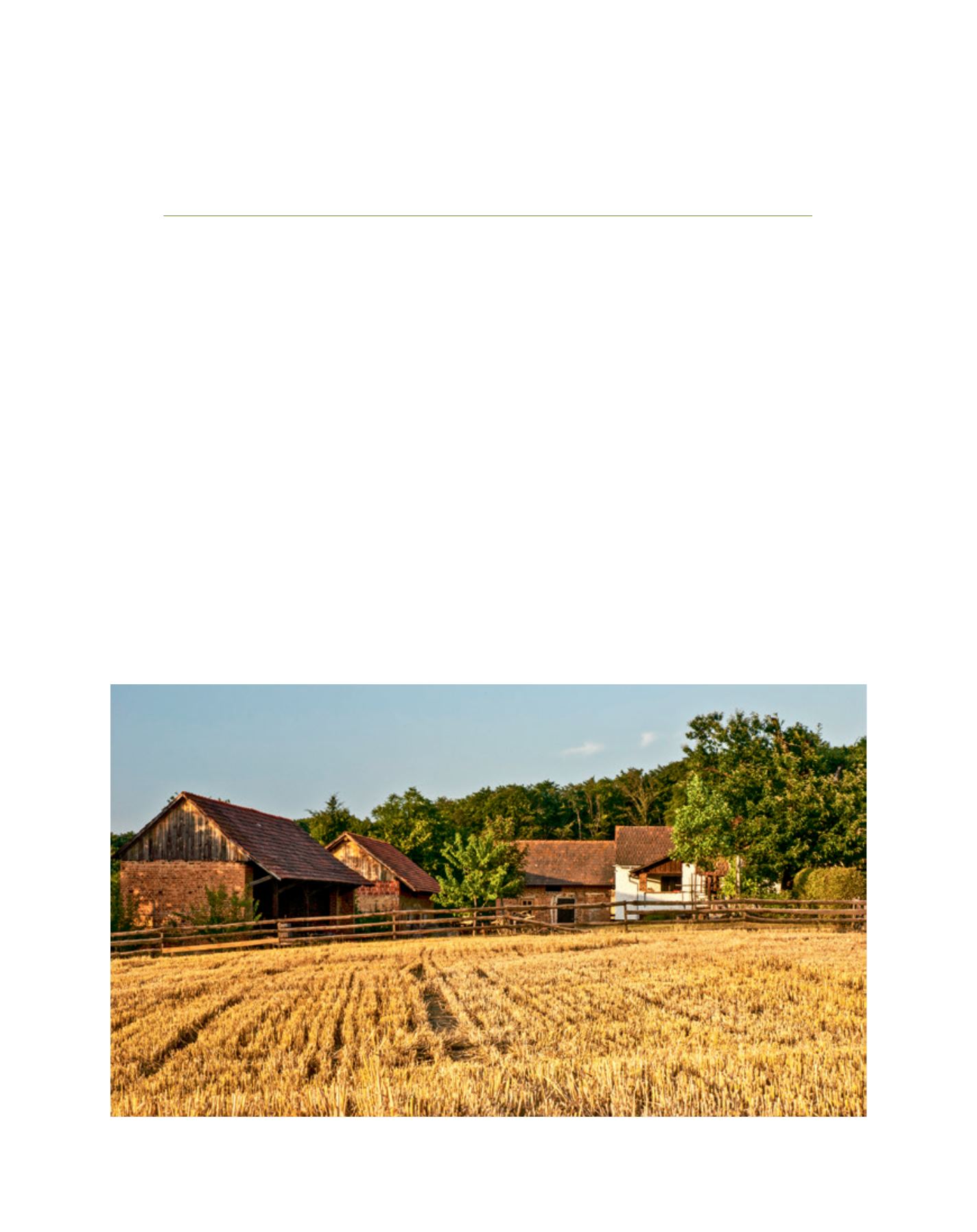

[
] 244
Slovenia: where family farming underpins
nature and strengthens local economies
Tanja Gorisek, Ministry of Agriculture and Environment, Slovenia
F
or Slovenia, a small, predominantly hilly and
mountainous country located in the middle of
Europe, family farming has been a principal model
of agriculture for centuries and it is certain to remain
so in the future. This model has proved adaptable to
the diverse natural characteristics of Slovenia and resil-
ient to the societal, political and market turnovers the
country has faced over the years as part of different
political constellations.
Slovenia’s territory is characterized by its diversified terrain,
rich cultural heritage and abundant and diverse natural sites.
Almost 90 per cent of its territory lies 300 metres or more
above sea level, while plain areas in the form of closed valleys
and basins account for less than 20 per cent of the entire terri-
tory. The diversity of natural conditions directly influences
dispersed settling, with a large number of small settlements.
It is also the reason for an exceptionally diverse and relatively
well preserved natural environment. Less favoured areas for
agricultural activity cover 86.3 per cent of the entire terri-
tory of the country, of which 72.3 per cent are mountain
areas. Due to high biodiversity, 37.2 per cent of territory is
included in Natura 2000 areas, which is the highest share in
the European Union (EU). Forests cover 70.7 per cent of the
Natura 2000 area. Forests are in fact a predominant feature of
the Slovenian countryside as they cover almost two thirds of
the country, placing Slovenia at the very top of the EU in the
share of forests. It is, therefore, no surprise that 84 per cent of
the 74,646 agricultural holdings in Slovenia also own wood-
land according to official statistical data. Forests comprised 42
per cent of the entire area of land used by agricultural hold-
ings in 2010, implying the importance of wood as an asset and
an additional source of income.
Throughout the centuries, unfavourable geographic condi-
tions have made it impossible for Slovenian farmers to obtain
larger plots of agricultural land. According to the Statistical
Family farming is the predominant model of agriculture in the small, hilly and mountainous country of Slovenia
Image: Kristjan Mala
č
i
č
D
eep
R
oots
















